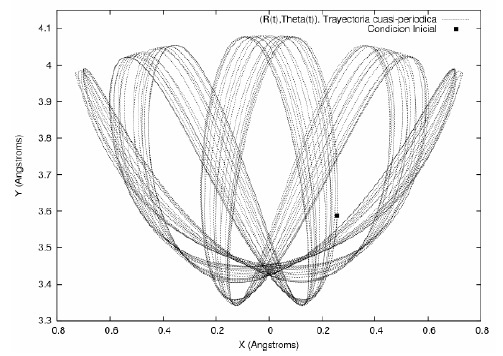Vibrational Predissociation Study of the Complex NeBr2(X, v = 1)
Abstract
The application of the Quasi-Classical Trajectory Method in the study of the vibrational predissociation of the NeBr2 (X, v = 1) molecular system is presented. The full dimensionality of the system was included in the model and the total angular momentum was taken to be zero (J = 0). The successive application of various numerical interpolation methods was used for both the reproduction and derivatives computation of the Potential Energy Surface [Prosmiti et al. J. Chem. Phys. 117, 10019 (2002)]. The quantum distribution corresponding to the state under study was computed by using a diabatic separation of the Jacobi variables r and (R, θ). Classical initial conditions were calculated to reproduce this statistical distribution. Practical limitations affected the total number of trajectories to be propagated. However, we show how the main dynamical features of the process can be understood from a representative set of these and a complementary analysis of both the PES and its derivatives. Several limitations of the methodology are discussed and so are some of its possible solutions.

This work is licensed under the Creative Commons Attribution-NonCommercial 4.0 International (CC BY-NC 4.0) license.








